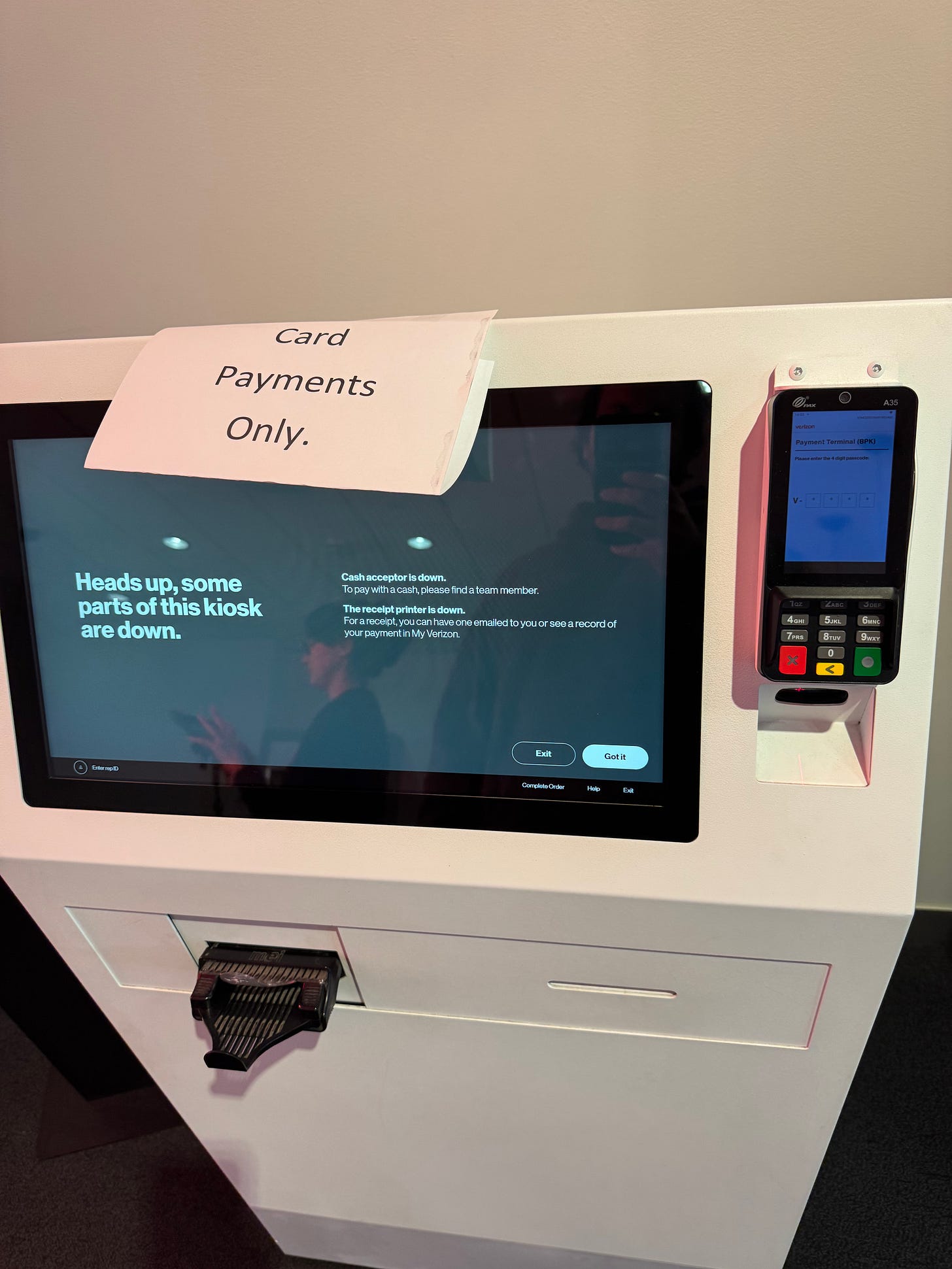Before the miracle of the internet, you could order a pizza and expect, by the force of the courts, that it would arrive at your house in thirty minutes or less. Imagine that today. 30 minutes?? That’s barely long enough for your driver to update his app, enter new payment details, tap in coordinates, and update the status of the ride, let alone for you and restaurant to do the same. All tech people who love Snow Crash have to admit: the proof is in the pie.
“Tech” loves tricking us into troubleshooting its machines.
You may be frustrated by the inevitability of your parking app, digital car key, golf reservation website, and self check out kiosk failing to work properly, but shifting the burden for the failure of these products from their makers to you is actually their purpose. They are illusions that magically convince you to do work that companies once did for you. And often, you have to pay to do it.
“Whoops, our bad! Please check back in a few” says the charming, effortlessly sar…
Keep reading with a 7-day free trial
Subscribe to The Carousel to keep reading this post and get 7 days of free access to the full post archives.



